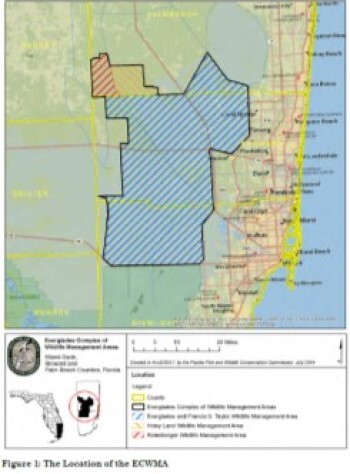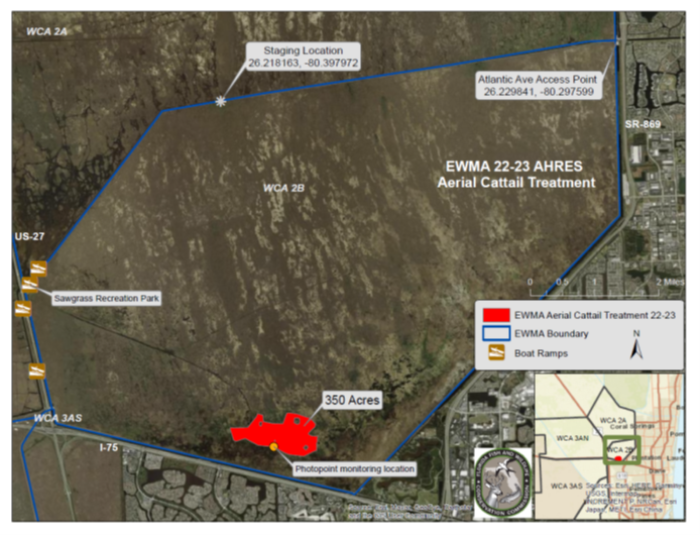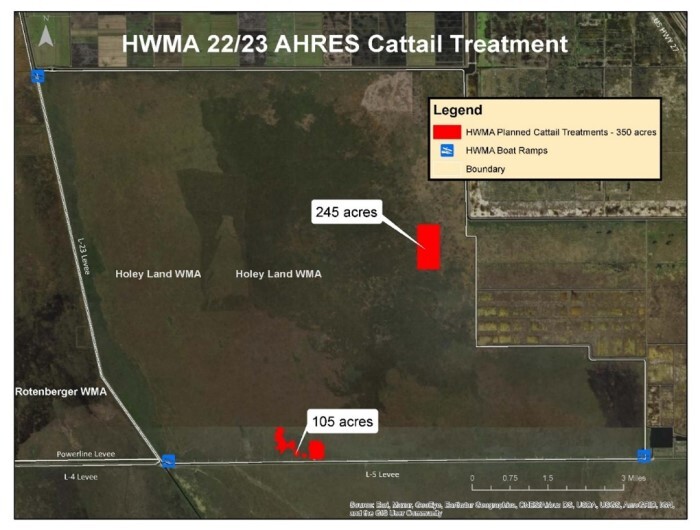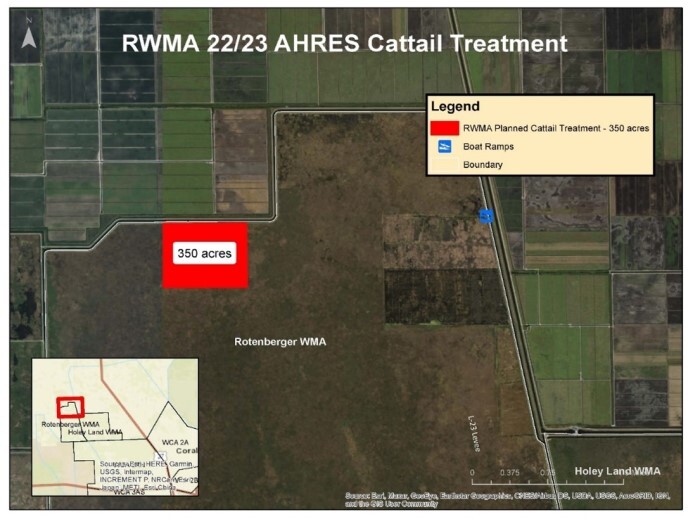FWC conducting aquatic habitat enhancement in Everglades WMA Complex
Florida Fish & Wildlife Conservation Commission sent this bulletin at 04/14/2023 04:12 PM EDT
(Having trouble viewing this email? View it as a Web page.)
April 14, 2023
Suggested Tweet: The @MyFWC conduction habitat enhancement in #Everglades WMA Complex: https://content.govdelivery.com/accounts/FLFFWCC/bulletins/354fe3d #Florida #InvasivePlants

FWC conducting aquatic habitat enhancement in Everglades WMA Complex
The Florida Fish and Wildlife Conservation Commission (FWC) will conduct aquatic plant enhancement within the Everglades Complex of Wildlife Management Areas throughout the week beginning April 17.
This project should improve native plant diversity, wildlife foraging opportunities and recreational access through a combination of aerial herbicide treatments and prescribed burns in wetland areas of the Everglades WMA Complex that are populated with dense, monotypic invasive cattail.
An aerial treatment of selective aquatic herbicides will target up to a total of 1,050 acres of invasive cattail (Figures 1-3). Due to accessibility issues and size of the treatment area, helicopters are the most efficient way to access and treat these areas. The selective herbicide used to treat the cattail is registered with the U.S. Environmental Protection Agency and the Florida Department of Agriculture and Consumer Services for aquatic use. All treatments will be applied at the recommended label rates. There are no restrictions related to fishing, swimming or drinking related to this management effort.
FWC project managers will be on-site throughout the treatment process to ensure the contractor is treating within project boundaries and meeting the specifications set forth in the scope of work.
Approximately 3 to 6 months after the herbicide application, the cattail areas will be managed with prescribed fire to quickly open the area up for wildlife use and consume the dead organic material. Prescribed fire following herbicide application extends the efficacy of the treatment and reduces the amount of herbicide used over time.
Habitat enhancement using multiple selective management techniques, such as herbicides and prescribed burning, is part of an integrated management approach used by the FWC on many lakes and wetlands throughout Florida.
Freshwater wetlands, such as those in the Everglades WMA Complex, serve as important habitat for fish and wildlife, providing high-quality foraging and nesting habitat for the endangered Everglades snail kite, wading birds, waterfowl and other marsh species. In addition to improving habitat for fish and wildlife, this project will also increase access for anglers and hunters.
The Everglades WMA Complex includes the Everglades and Francis S. Taylor, Rotenberger and Holey Land WMAs and encompasses 736,881 acres in Palm Beach, Broward and Miami-Dade counties.
For additional information about the Everglades WMA Complex, visit:
- MyFWC.com/Recreation/Lead/Everglades
- MyFWC.com/Recreation/Lead/Holey-Land
- MyFWC.com/Recreation/Lead/Rotenberger
To learn more about the FWC’s Aquatic Habitat Conservation and Restoration projects, visit MyFWC.com/AquaticHabitat.
For general waterbody information, fishing forecasts, virtual tours, plant control operation schedules and annual workplans, boat ramp information and more, visit the “What’s Happening on My Lake” website at MyFWC.com/Lakes.

Figure 1. Aerial treatment areas (red polygons) at Everglades and Francis S. Taylor WMA.

Figure 2. Aerial treatment areas (red polygons) at Holey Land WMA.

Figure 3. aerial treatment areas (red polygons) at Rotenberger WMA.

